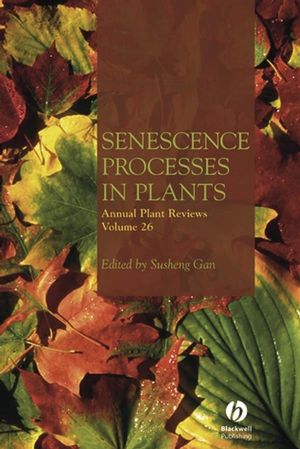Annual Plant Reviews, Volume 26, Senescence Processes in PlantsISBN: 978-1-4051-3984-7
Hardcover
354 pages
April 2007, Wiley-Blackwell
 This is a Print-on-Demand title. It will be printed specifically to fill your order. Please allow an additional 10-15 days delivery time. The book is not returnable.
|
||||||
The scientific and economic significance of plant senescence means
that much effort has been made to understand the processes involved
and to devise means of manipulating them agriculturally. During the
past few years there has been considerable progress in this regard,
especially in the molecular, genetic and genomic aspects.
Senescence has a tremendous impact on agriculture. For example,
leaf senescence limits crop yield and biomass production, and
contributes substantially to postharvest loss in vegetable and
ornamental crops during transportation, storage and on shelves. In
addition, proteins, antioxidants and other nutritional compounds
are degraded during senescence. Senescing tissues also become more
susceptible to pathogen infection, and some of the pathogens may
produce toxins, rendering food unsafe. Mitotic senescence may also
determine sizes of leaves, fruits and whole plants.
This volume summarizes recent progresses in the physiology, biochemistry, cell biology, molecular biology, genomics, proteomics, and biotechnology of plant senescence. Beginning with a chapter on senescence-related terminology and our current knowledge of mitotic senescence in plants (a less well-studied area), the book focuses on post-mitotic senescence, and includes chapters addressing the senescence of leaves, flowers and fruits. Later chapters examine the development of various new biotechnologies for manipulating the senescence processes of fruit and leaves, some of which are approaching commercialization. The book is directed at researchers and professionals in plant molecular genetics, physiology and biochemistry.



